The gas tank was nice and thick, and there are good and evil angels, a vulture, and screaming people coming up the front. Even the underside of that tank was carved. The carb had the seven deadly sins on it, the kicker had snakes, and I had some Latin wording here and there, which kind of added to the dark/light theme.
Light and darkness, etched in symbolic motifs, and layered over a chopper’s skin, like tattoos on metal muscle.
Heather New’s talent as an engraver elevates a motorcycle build from the realm of structural modification to pure, rideable art, and has amplified the works of Billy Lane, Paul Cox, Keino Sasaki, Eddie Trotta, Scott Porges, Le Mani Moto’s Gary Capone, Indian Larry Motorcycles, Jessi Combs, and many more over the years.
Gas tanks, handlebars, pipes, rocker boxes, carbs, kickers, rims, shocks … no metal surface is off limits.
The Western Canadian-based artist – who made the permanent trek from Crossfield, Alberta (near Calgary) to Osoyoos in British Columbia’s Okanagan Valley last month – started her journey in the ‘80s, mentoring under master hand engraver Frank Gurney, who she remains friends with to this day.
“He had done work for the Queen, and was known for his mastery on guns,” New says. “He was eccentric, artsy, kind and had a hilarious sense of humor … we still have many laughs.”
Back then New’s work as a 20-something had included machine engraving – mostly jewelry … watches, bracelets and rings – but her indoctrination into the world of hand etching steered her fates toward the custom motorcycle build scene.
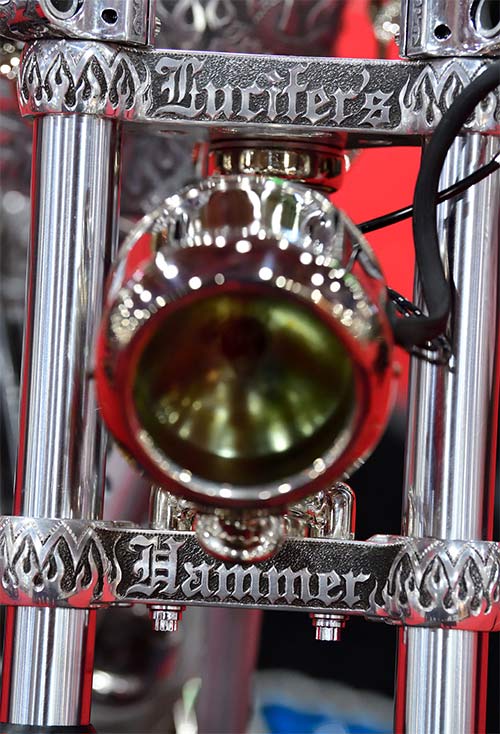 A DIVINE CHOPPER
A DIVINE CHOPPER
New Yorkers were lucky enough to see one of those functional art pieces four years ago at the International Motorcycle Show, with Scott Porges’ Lucifer’s Hammer lighting up the Javits Center display floor with its thematic references to good and evil.
In all New’s contribution to the project was over two dozen pieces; She was recommended by none other than local builder icon Paul Cox.
“I was sent three to four parts at a time, over a three-plus year period on this bike,” New recalls, adding there was never a planned layout for the parts, so the worry that there might be a lot of engraving clustered together was always in the back of her mind.
Would the pieces be too similar, right next to each other? And how much would be too much?
“The thing about having multiple engraved pieces on a bike, is that they have to tie together without being too repetitive, or too themey.”
Divine providence would, as it happened, intercede more than once.
“Scottie Porges (of American Motorcycle Service in Framingham, MA) was such a great guy to work with ... he gave me free reign to go with whatever I wanted with the work, and he sent me chocolate,” New says. “I was originally (given) one photo of a sketch of a final battle between good and evil, but he allowed me to use that as a jumping off point, telling me that the bike would be raw, and have no paint whatsoever. I was thrilled to hear it as many times paint and engraving can compete on a bike.”
New eventually decided to push the good vs evil ideology.
“I had reaching hands and flames and arches all over it. Like reaching out of the darkness ...”
On the rocker box windows, above the cylinder heads, New laid out angels on one side and devils on the other, including a depiction of Porges smoking and wearing sunglasses taken from a photo of the builder she found on Facebook.
“He loved it,” New says. “The gas tank was nice and thick, and there are good and evil angels, a vulture, and screaming people coming up the front. Even the underside of that tank was carved. The carb had the seven deadly sins on it, the kicker had snakes, and I had some Latin wording here and there, which kind of added to the dark/light theme.”
The strangest part of the story came to light a few years after all the work had been completed, though.
“I was at my Mom's in a different province. There, on the floor in her bedroom, was an old oil painting, done by my grandfather. It had not been hung up in over 20 years … a painting of reaching hands, and arches, called ‘Verona’, where people reach up to touch the box which contains the bones of Saints.”
New was given the painting, and has it hung now in her home. But at the time, she had not seen it in years.
“Something about that painting must have inspired me, but I didn't even know it at the time.”
New also had had no contact with the artist who worked on the bike’s inlaid leather seat, which features an archangel holding a sword pointed downward.
“As it turned out, they did the leather seat in a (remarkably) similar style to the gas tank I did ... a sword pointing down, with angels and fallen angels. The swords point toward each other in the middle of the bike. It was so strange to me how the universe pulled it off so perfectly.”
New considers herself even luckier to have seen the completed bike when it made its way up to Montreal, Quebec in Canada for a show in 2018.
The Four Horsemen — Heather New
As I was taught, I used to do a cross-hatching wiggle cut, back and forth, over and over and over in different directions to remove depth. But I now remove background depth with a Dremel. After I cut the background down, I use traditional gravers, files, bits of sandpaper, broken cutters and little wheels to shape the piece.
THE DEVIL’S IN THE DETAILS: PLAYING OFF CONTRAST
While thematically New has many projects which play off light and dark, the actual process of engraving also relies on physical contrast to be artistically effective.
“I prefer aluminum, it is nice and soft, but I can do steel and brass,” New says. “And I prefer the look of deep carving. I think the minimum should be around 1.5 to 2 mm, but I like when it's 8 to 10 mm for maximum depth.”
Thinner metal means less depth, but even that can be allayed with texture to produce the needed contrast, she says.
“After all cutting is done, I apply a few coats of gun blue (a black oxide coating) to the piece. It will turn everything dark, then when you go over it again with fine steel wool and polishing paper, the deepest spots will stay dark. It really makes the pieces pop.”
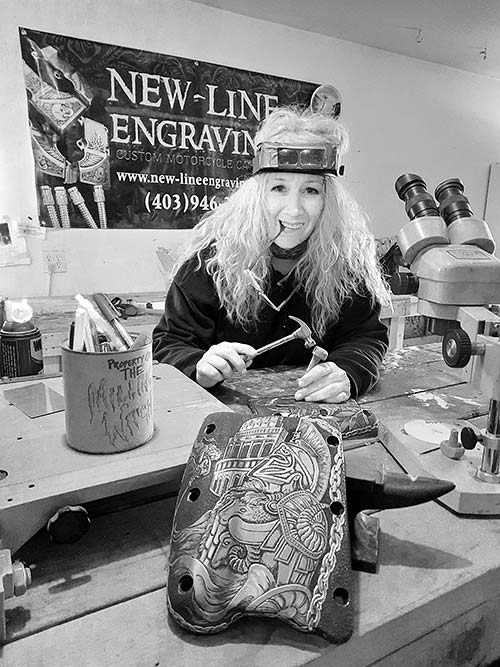 A project typically starts with an approved layout.
A project typically starts with an approved layout.
“I get two types of clients,” New says. “One doesn't know what they want, and the other knows exactly what they want. I will get a client, for example who wants three koi fish, and may send me a picture of one as an example. It is my job, to turn that concept into a working layout ... Is there coral in the water? What direction are the fish swimming? What other elements can I add to create balance … otherwise, it’s just a koi fish.”
This takes more time than clients who know what they want, who may send a logo or exact artwork along with instructions as to placement on a piece.
“I never have to worry too much about composition or layout for those guys.”
However, some of New’s favorite pieces are the ones she is “allowed to just run with.”
“I try to create the artwork I would like to see on a bike, instead of anything you could buy in an online store. And I try to convince my clients to add personal touches – quotes, tattoos – little touches to make (the finished piece) more subliminal and personal.”
MAKING THE CUTS
Before New cuts into metal she applies a light coat of white, acrylic ‘nurses shoe repair paint’ to the piece – just one of many tricks of the trade her mentor Frank Gurney passed down – and then she draws the final design onto it.
Thirty-plus years of hand engraving work have forced New to adapt her carving methods, which now include the use of an automated machine to ease the strain on tendons in her right arm.
“Right now, it is a 14-mm tear on a 25-mm tendon, so the universe has been giving me a break from pushing too hard,” she says.
“As I was taught, I used to do a cross-hatching wiggle cut, back and forth, over and over and over in different directions to remove depth. But I now remove background depth with a Dremel. After I cut the background down, I use traditional gravers, files, bits of sandpaper, broken cutters and little wheels to shape the piece.”
New says she has caught some flak from traditionalists, but pushes back at any and all negativity.
“I ask if their tattoos were done with a pin and hammer, or a tattoo gun? I also think this BS stops the do-it-yourself types from trying a piece themselves. Why shouldn't a guy try it in his garage? Anyone can contact me anytime, and I will help them. I have, and I do, all the time.”
Angels and Devils on Lucifer's Hammer | Cemetary Wedding — Heather New
Gas tanks reverberate sound, so sometimes I wrap them in old blankets and wear ear protection. I have found that the ideal answer to hold pieces, is whatever works, and it is not always clamps.
OFF LIMITS
New does have a few provisos with projects relating to both materials and subject matter.
Chrome pieces need to be stripped to bare metal for engraving.
“Chrome is hard, and often flies off into little pieces like razor blades,” New says. “It almost always has a layer of copper between the chrome and the base metal. That is because copper is a good conductor and will help the chrome adhere. Copper easily and quickly oxidizes (tarnishes) and so, you have to cut down through all three metals. The copper will then be open to oxygen and begin to tarnish and ruin the piece. Gun blue also does not work on chrome.”
Then there’s subject matter, which New addresses very specifically on her website.
“NO racist comments. No hateful stuff, No fearmongering … I wasn't put on this planet to spread hate,” she says. “Were any of us put here for that?”
To that effect, New signs all her work ‘LTW’.
“It’s because of one particular client who had ‘FTW’ on everything: his buckle, his motor, his tattoos ... a real gem. At first, I thought it was his initials,” she says with a laugh. “So it’s ‘Love The World’ instead.”
And finally New does not work on guns, despite her mentor’s prowess and notoriety working with firearms.
“I have even been asked by pretty famous people ... I certainly can, but I don't,” she says. “I understand that some people love their guns, and I have zero judgement for that. They just have to go elsewhere to get it done, that's all. It’s more of a childhood trauma thing.”
PIÈCE DE RÉSISTANCE
What New has engraved ranges from championship rings for the likes of the Detroit Red Wings, the Florida Marlins and the Chicago Bulls, to guitars – wooden and metal, ten-foot airplane propellors, knives, cars, lighters and plaques.
For the rings, New was an AutoCAD programmer, ran a CNC machine and did hand engraving, looking at a mold through a microscope to carve it backwards, adding details such as muscle tone and hair before the final rings were cast.
“I think I can engrave on practically anything.”
The size and weight of some parts, especially on cars and motorcycles, can make the jobs much more difficult.
“Like (exhaust) pipes … and handlebars are tough … you have to rotate them so that you have a flat cutting area, and suddenly they will flop over. I’ve had many bonks on the head from the last few sets of handlebars I did.”
And there are even more insider tricks.
“Gas tanks reverberate sound, so sometimes I wrap them in old blankets and wear ear protection. I have found that the ideal answer to hold pieces, is whatever works, and it is not always clamps.”
New has worked on numerous hot rod restorations – scrollwork on exterior and dashboard trim, seat rails and even an entire dual exhaust for an old corvette, done up with a flame motif.
 “That was an insane job … who would even see it?” she says. “All the parts showed up individually in a dryer box ... and because flames all had to go in one direction, I had to have a friend come and lay the individual parts out on my floor.”
“That was an insane job … who would even see it?” she says. “All the parts showed up individually in a dryer box ... and because flames all had to go in one direction, I had to have a friend come and lay the individual parts out on my floor.”
New has had requests from Dubai, Saudi Arabia, Germany, Italy and Australia, all the while being located in a small Alberta town where her neighbors knew only that she was a mother. For her, that anonymity was a measure of success.
Two jobs are particularly memorable.
“I've had great memories of the people, more so than the actual projects themselves,” she says. “I think one of my biggest bragging rights, is that my head fit into one of Billy Lane's hubless wheels. I have a big head of hair, and I wear a magnification visor, so I had to almost crawl into it to see what I was doing. Every time he posts a photo of a hubless bike, I think about the difficulty of that job, propped on pillows and rotating it every four inches or so. It was so heavy. I've done a few sets of mags and several motorcycle wheels.”
Supporting those projects is always an issue, but as long as New can secure them, she will get them done.
New also talks about her experience working with the now sadly departed record-holding racer and machinist Jessie Combs.
“She wanted the theme to be ‘LOVE’, and even had me put an angel lifting her up onto the imagery,” New recalls. “She initially sent me a photo of some engraving which was her screensaver, wondering if I could do that caliber of work … it was a photo of the rocker boxes with all the little demons turning the wheels.”
As it turned out it was one of New’s pieces.
“We were both kinda blown away by that coincidence and went on to have several conversations about how she wanted to inspire young girls. I generally ended my emails with ‘Be Safe, Girl!’ It's heartbreaking to think about that now.”
Combs died in a crash after attempting to break the land-speed record in the Alvord Desert, Oregon, in August 2019.
Alexander Hamilton 10-spot | Koi fish seat — Heather New
I think one of my biggest bragging rights, is that my head fit into one of Billy Lane's hubless wheels. I have a big head of hair, and I wear a magnification visor, so I had to almost crawl into it to see what I was doing.
HQ ON A TYPICAL DAY
If they say an artist’s soul can be seen in the workspace they choose for themselves, then New’s creative quirkiness and humor are forefront in her shop.
“It has been interesting over the years. At one time, I had a nine-foot ‘Oscar’ when I was building it for my son's grad, which was themed like the Academy Awards."
Add to that a set of clown shoes – New volunteers as a clown, a rubber chicken, eight-foot Elvis posters and a plaster cast of her son's head on a platter, an actual replica of him from when he was studying theatre. There are drums, mandolins, guitars and saxophones. And stickers and posters from the many motorcycle companies she has worked for are distributed throughout.
The actual workspace … which New is in the process of recreating in her latest Osoyoos home, features several high and low workbenches, chop saws, grinders and buffers.
“I have a large worktable covered in aluminum dust, a graver's ball, and gravers and sharpeners … and I scooped up an old (medical) IV holder on wheels from a hospital, which I hang the Dremel on. There’s calipers, hack saws, some welding equipment, and some WD-40 that my husband keeps stealing.”
On one occasion New said some Hutterites (similar to the Amish) came by her shop to purchase equipment from her and immediately asked, “What exactly do you do here?”
“They must have seen my kid's head on a platter. I still laugh about that.”
A typical workday could see New working long days and nights with a mid-day break, on multiple jobs.
“I would be cutting one project, and when giving my arm a break, emailing with five clients, then laying out the art for 10 more projects on the bench, which were up next. Have you ever talked to three guys named ‘Dave’ at the same time? In my head it would be: Derby Skull Dave, Scrollwork panhead Dave and Dave from Indiana. (cue up These Are The Daves I Know by Kids in the Hall) This went on for years, seven days a week mostly, and just like everyone I knew, I was going and going and going.”
Since the COVID-19 pandemic hit in Spring 2020, that work definitely slowed down for New, who took the extra time to reevaluate the things that mattered to her such as family.
“Nowadays, I take time to play my mandolin every day, to take my doggies for a run, to really enjoy my coffee, instead of letting it get cold on the bench next to me. I also do artwork layouts for my jobs, carve up motorcycle parts, and I am currently working on some illustrations for a children's book I wrote. We must all have a balance between enjoying what we do and over-doing what we do for the sake of paying bills.”
At this time, if she feels too sore, she goes inside to draw.
“No more 16+ hour days for this arm,” she says. “So, it may be six weeks instead of four weeks turnaround for a part ... but that's ok.”
Ignition: turn of the key | Steel guitar — Heather New
Dollars must go into the bank, and dollars must come out … it’s all cyber digits, really … but that kind of reaction is another form of payment for the creative soul. Anyone who creates or builds anything understands that.
THE COST OF PERFECTION
In terms of pricing for a job, every project is unique, with quotes calculated based on an hourly rate.
“For every piece, I will do a rendering after the parts arrive ... which helps us come to an agreeable price. If you took a derby cover, and put 400 peace signs on it, or one big peace sign, the one big peace sign would be way less time. Every job has to have a different quote ... because no two are alike.”
Potential clients can also look at New’s website to see if there are any completed parts in her gallery which may be comparable in terms of the work involved.
Like any artist, New often puts far more time into a job than she charges for.
“You know when you quote on a 40-hour job, but you lose yourself in the work, put 60 hours in, and don't say a word about it … every builder I know does this,” New admits, adding client feedback and reactions are an additional emotional payback for her.
“I would have to say that I really get the best enjoyment from a job when the client reacts,” New says. “I once had a really great guy write HOLY F**K in size 70 font (when he saw a finished piece).”
“Dollars must go into the bank, and dollars must come out … it’s all cyber digits, really … but that kind of reaction is another form of payment for the creative soul. Anyone who creates or builds anything understands that.”
You can reach Heather New via her website -- heathernewengraving.com, email her at HezzieNew@gmail.com or message her through Instagram @heathernewengraving.
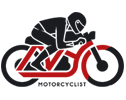
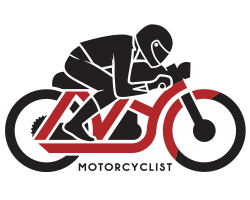

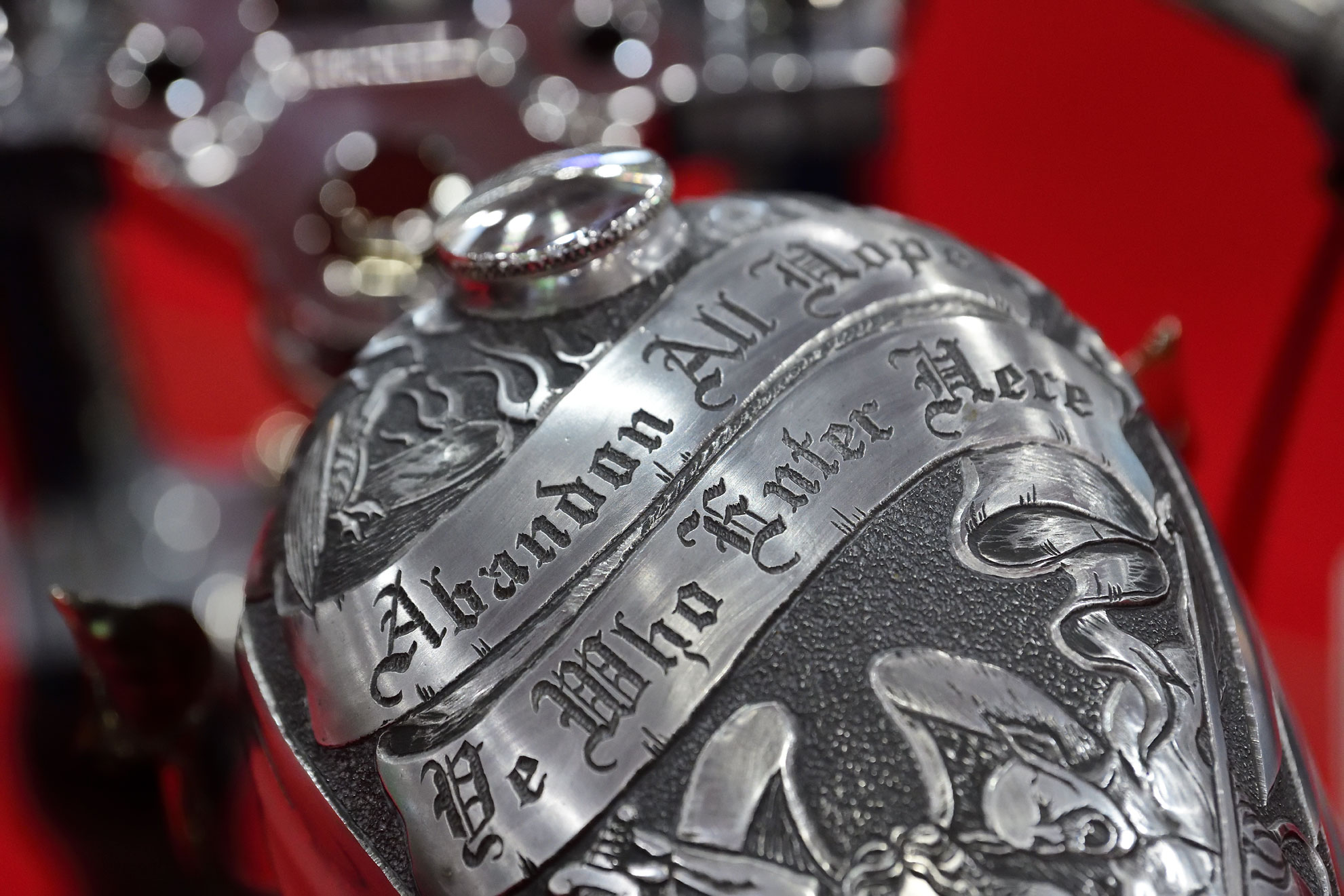
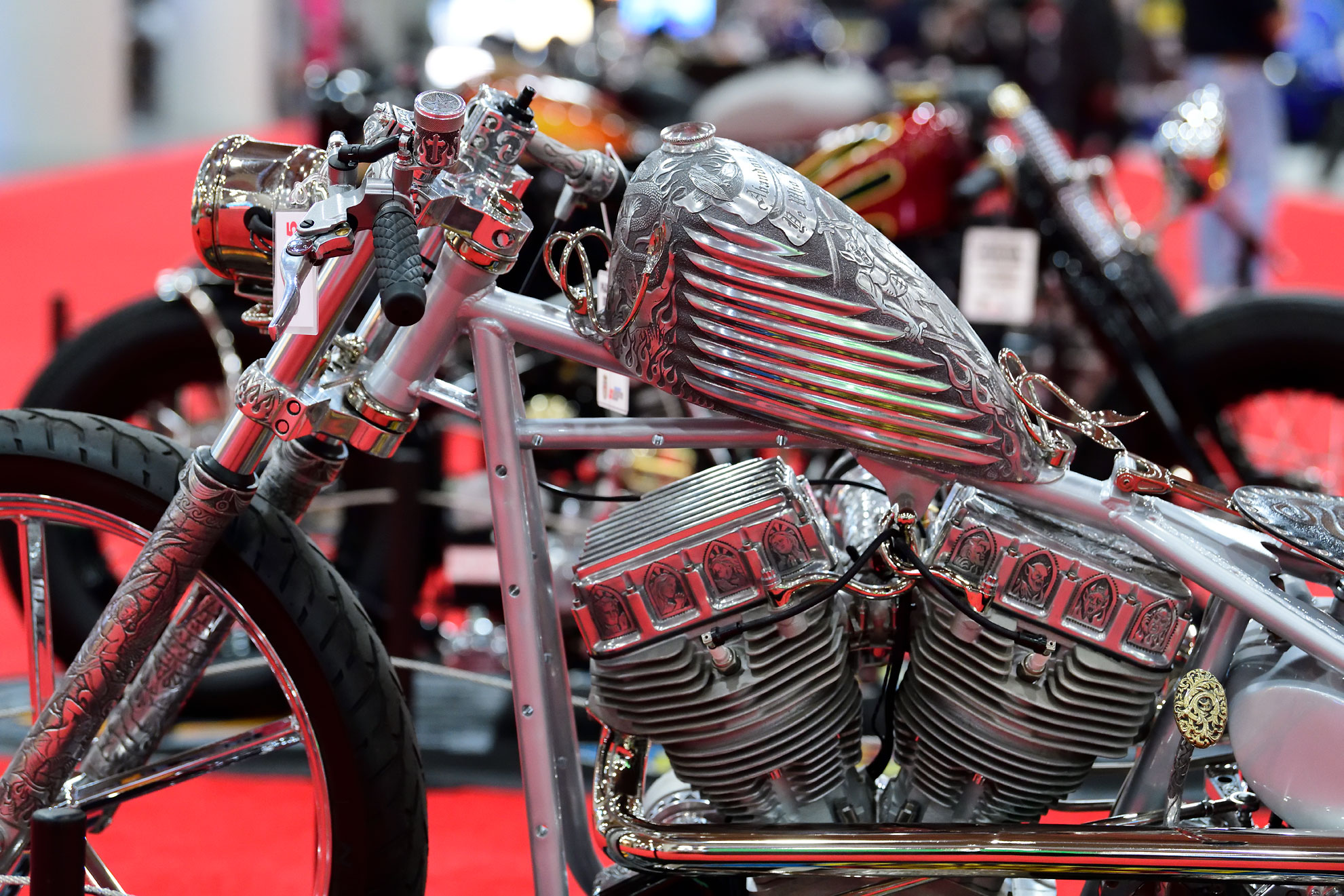
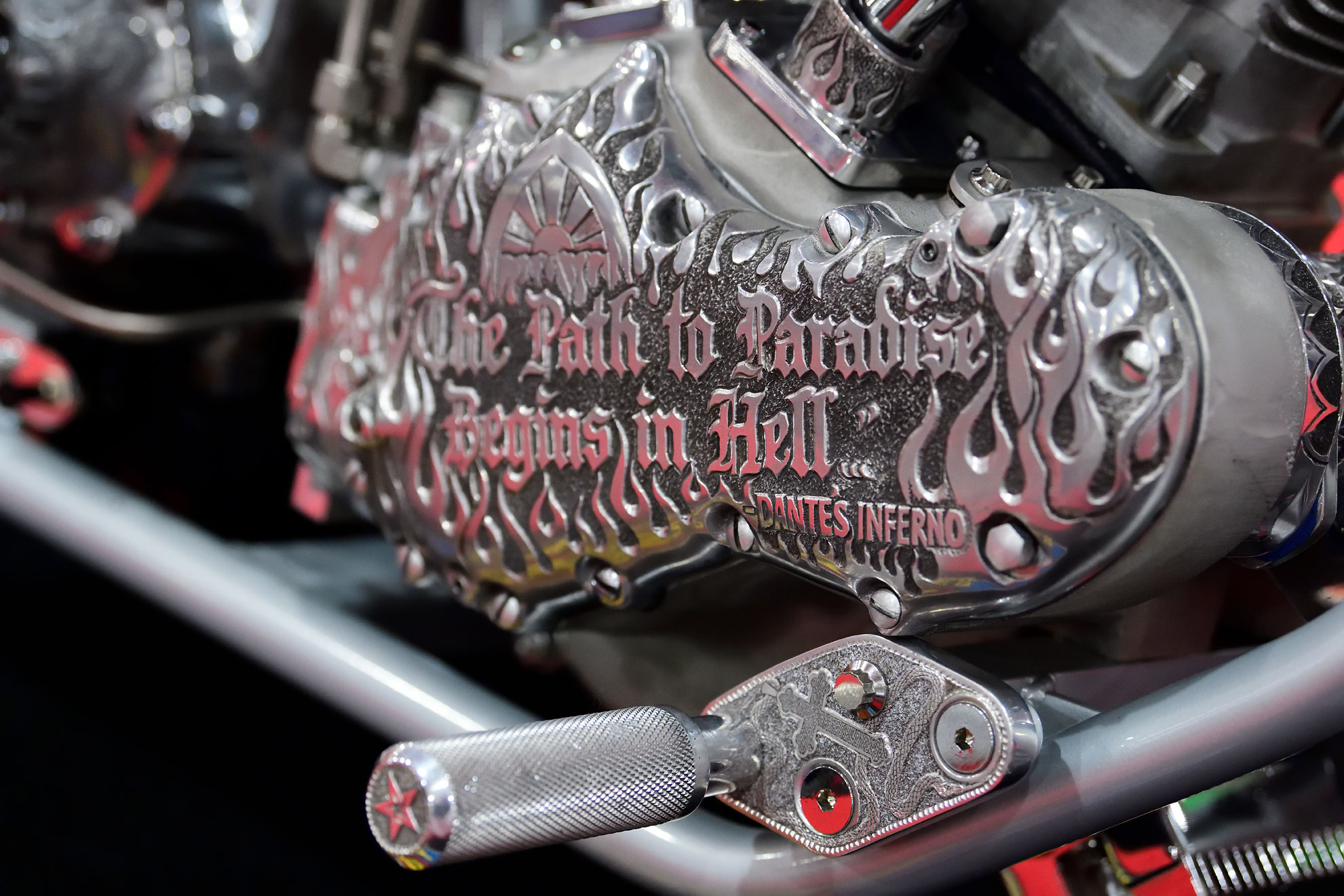
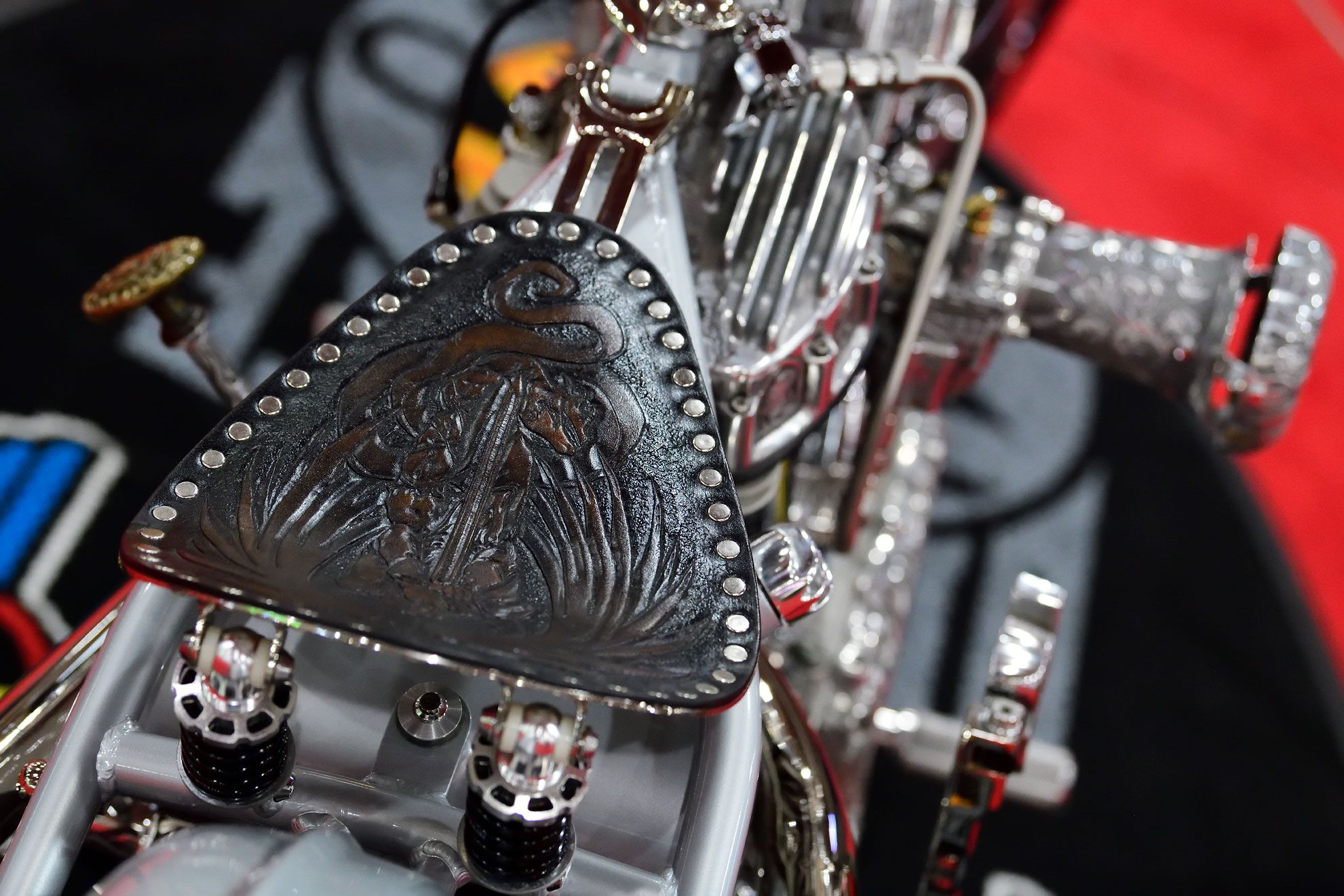
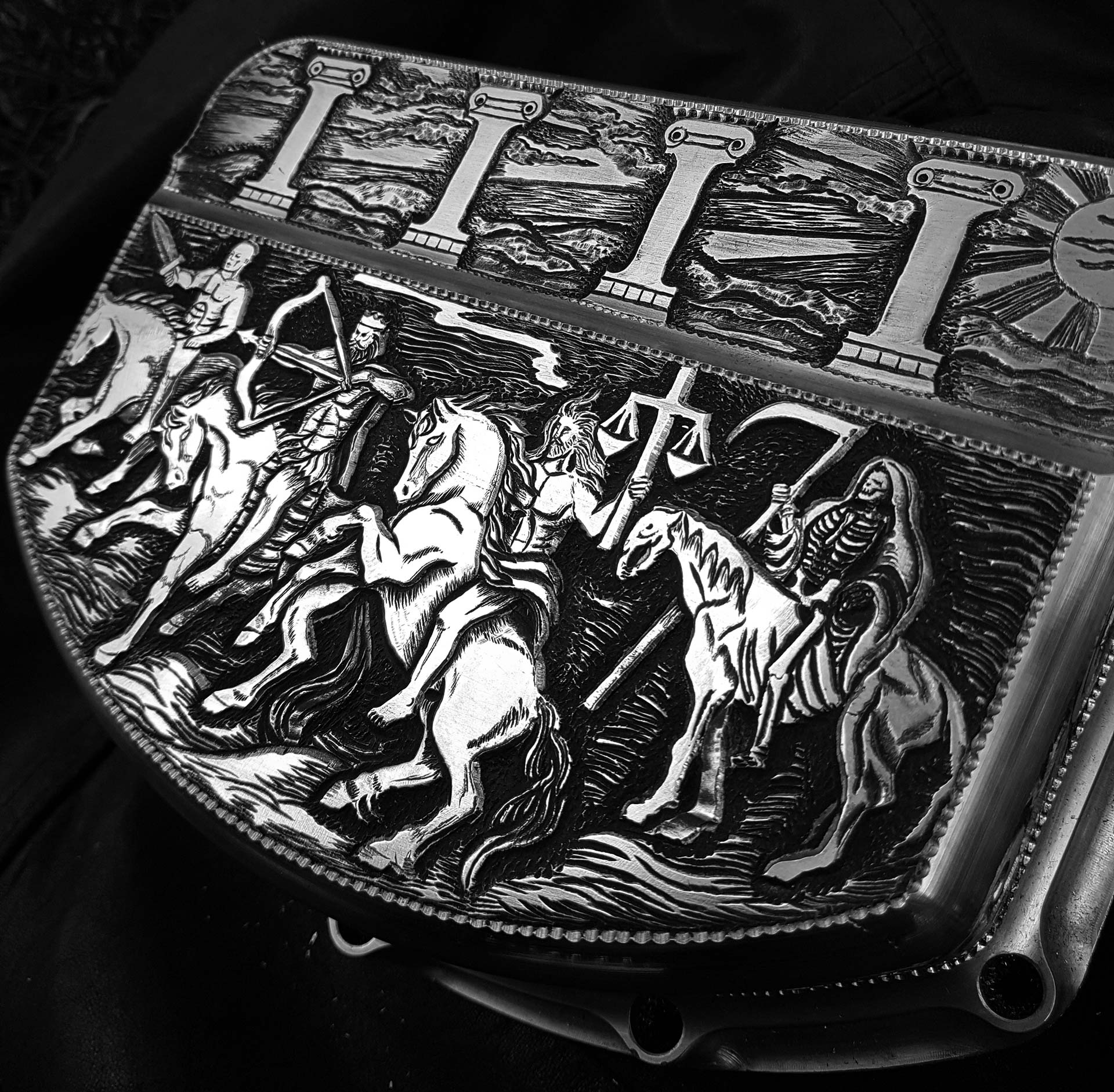
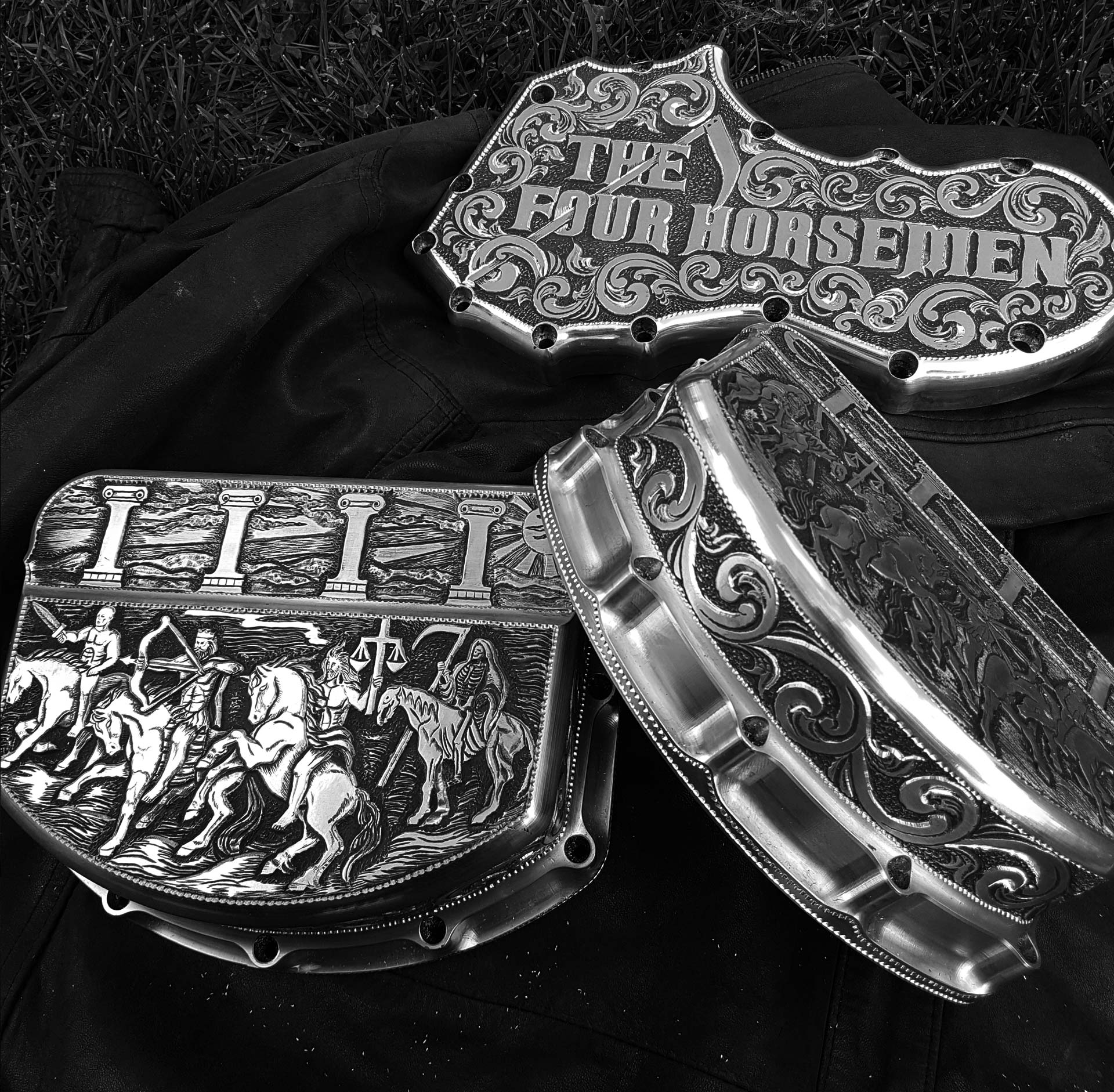
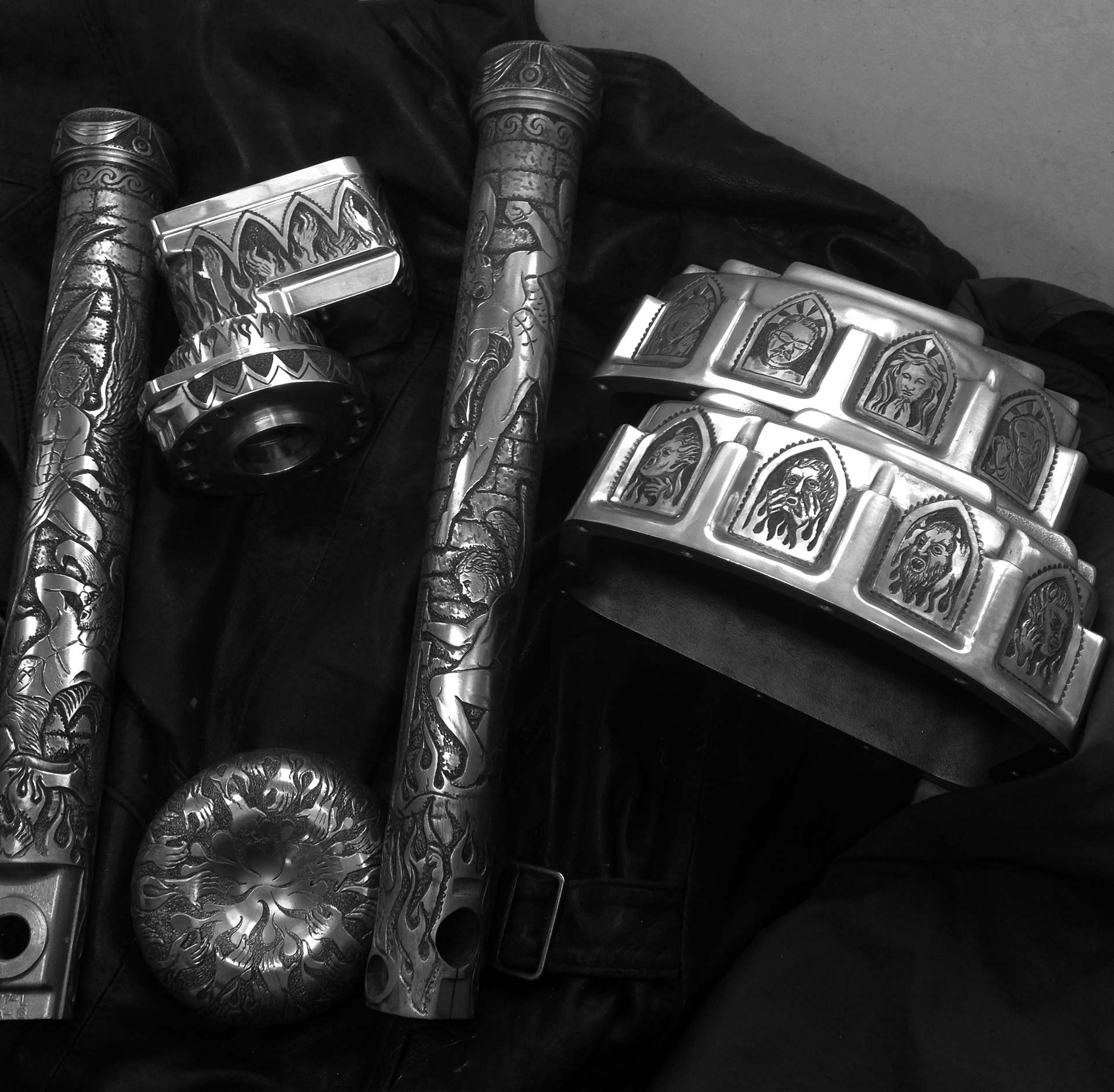
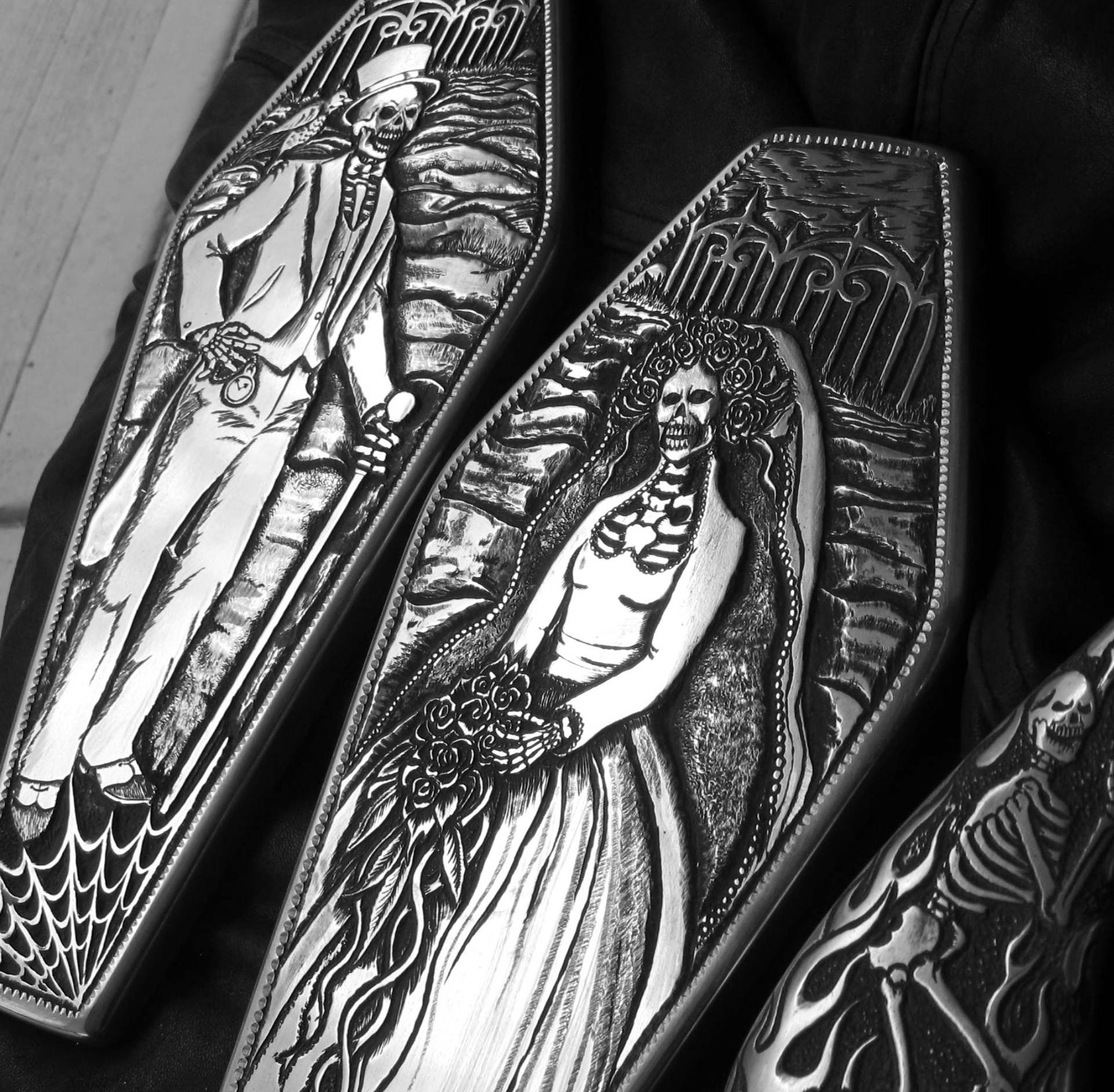
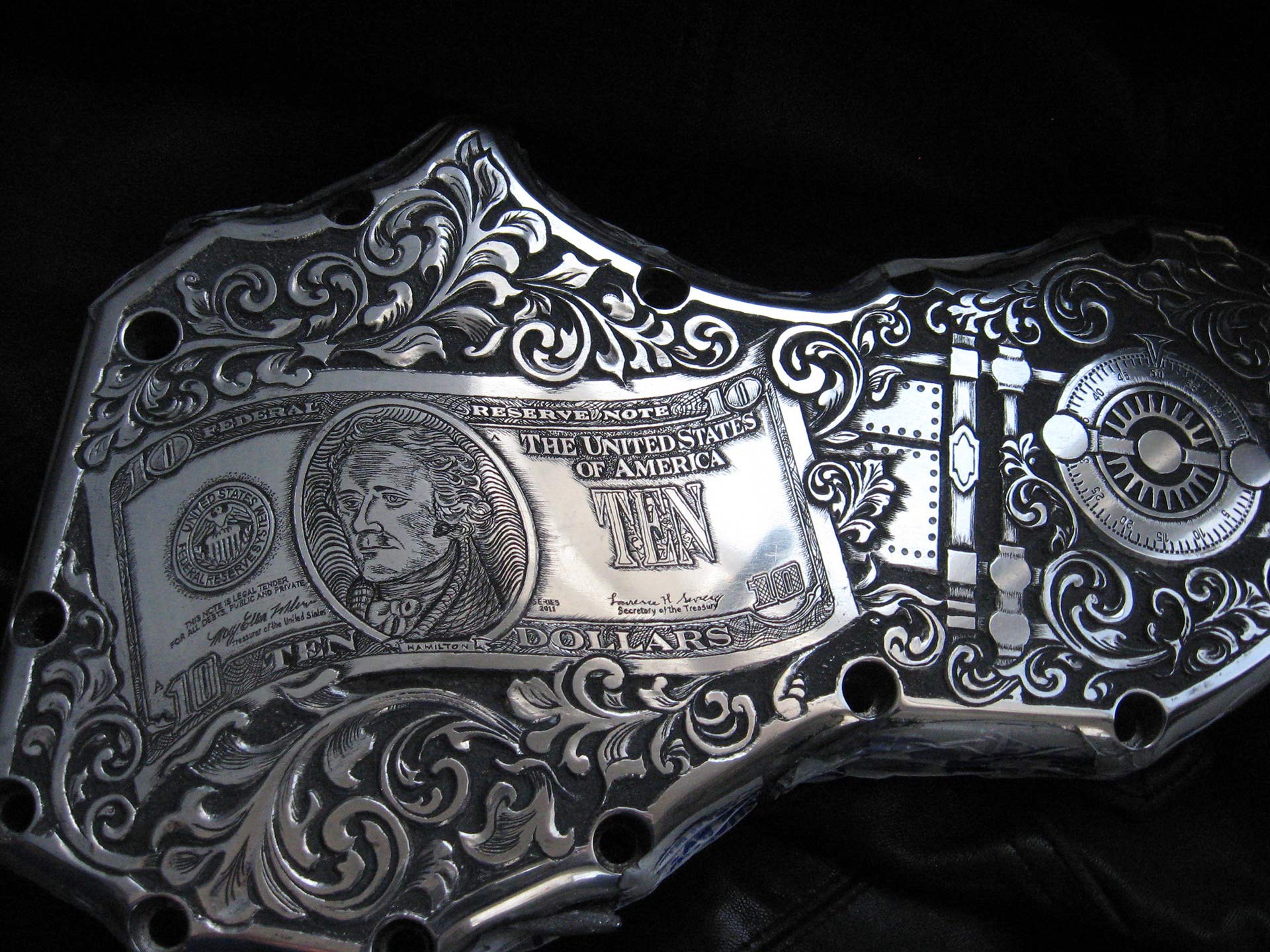
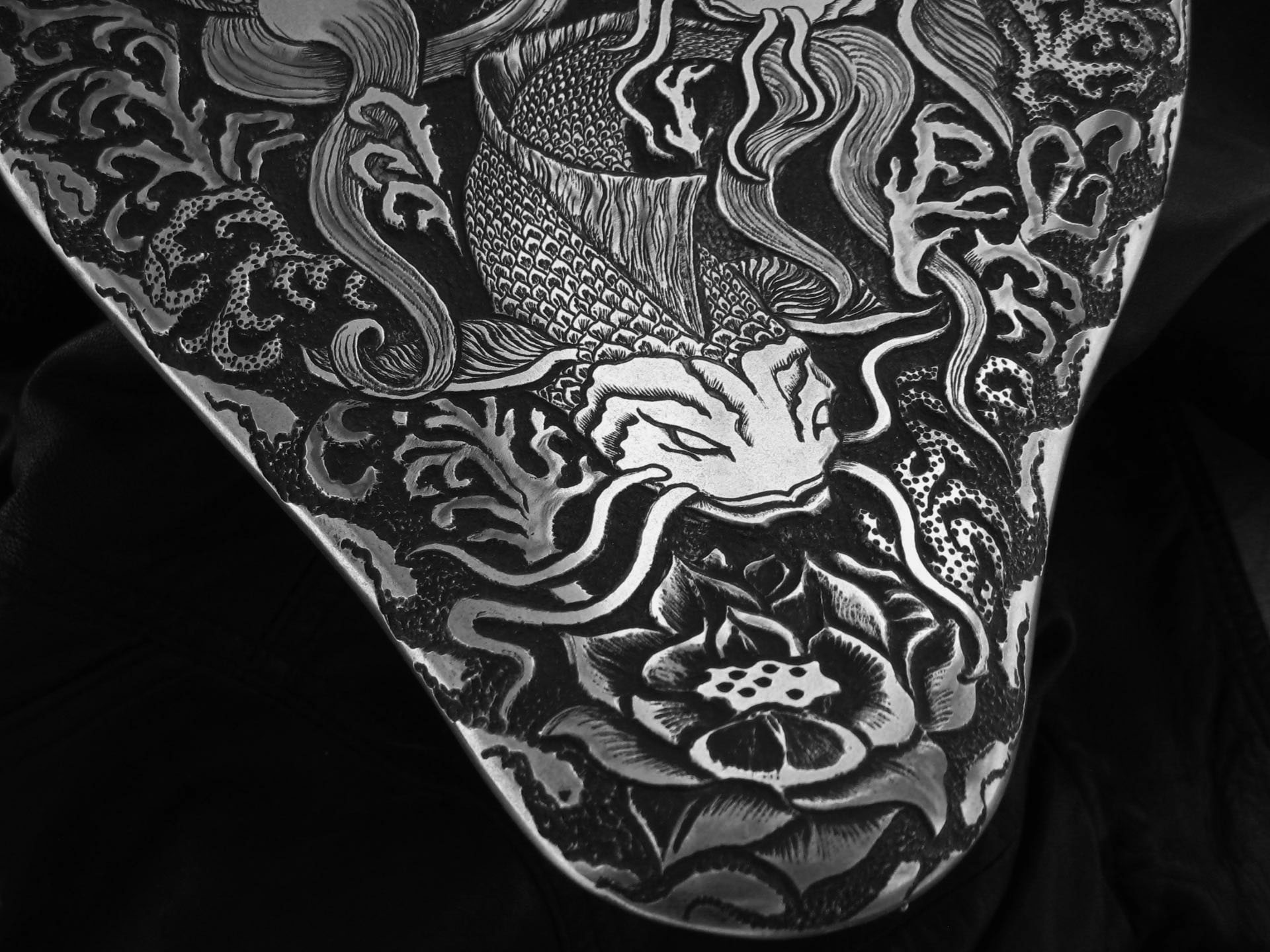
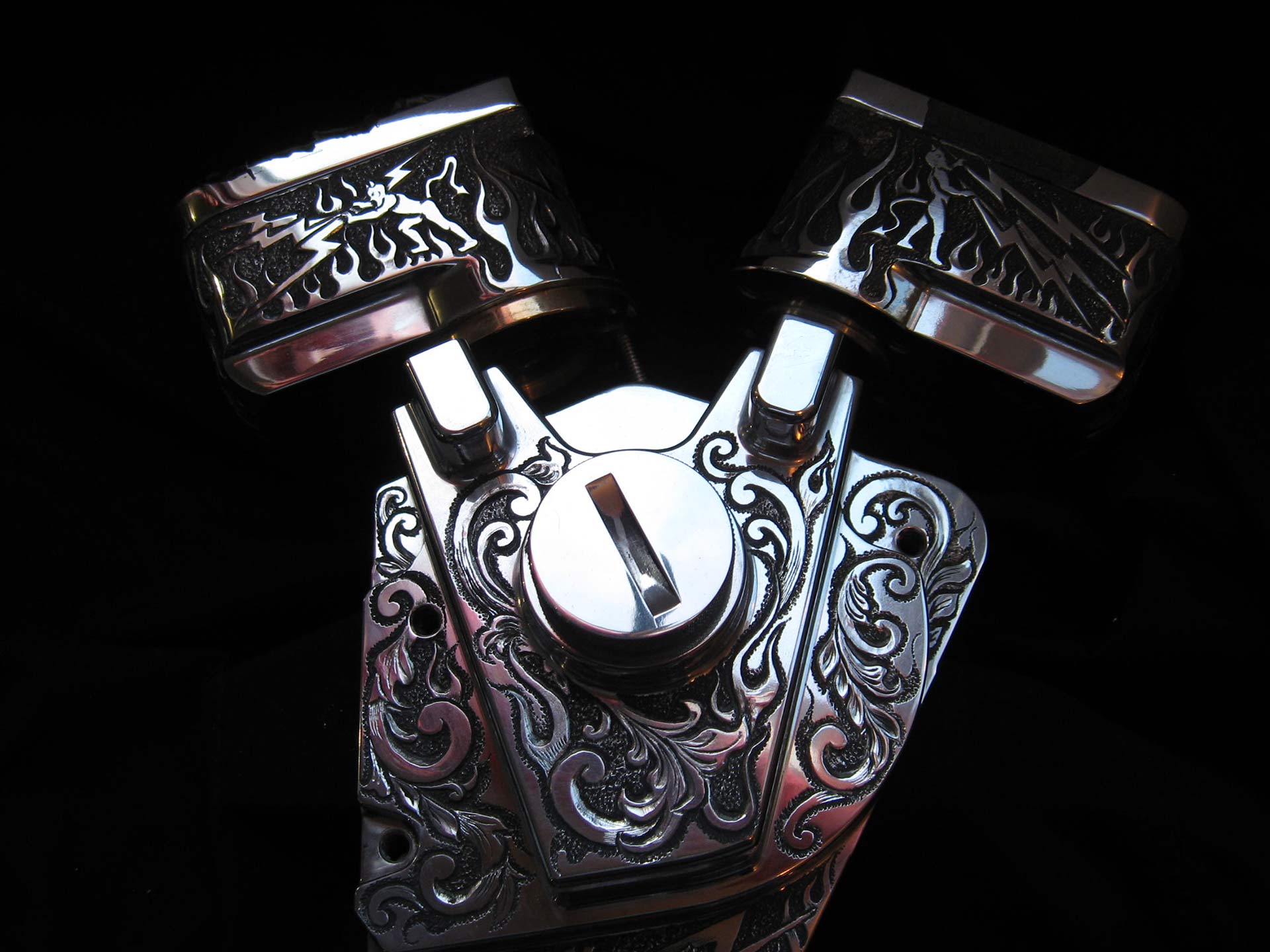
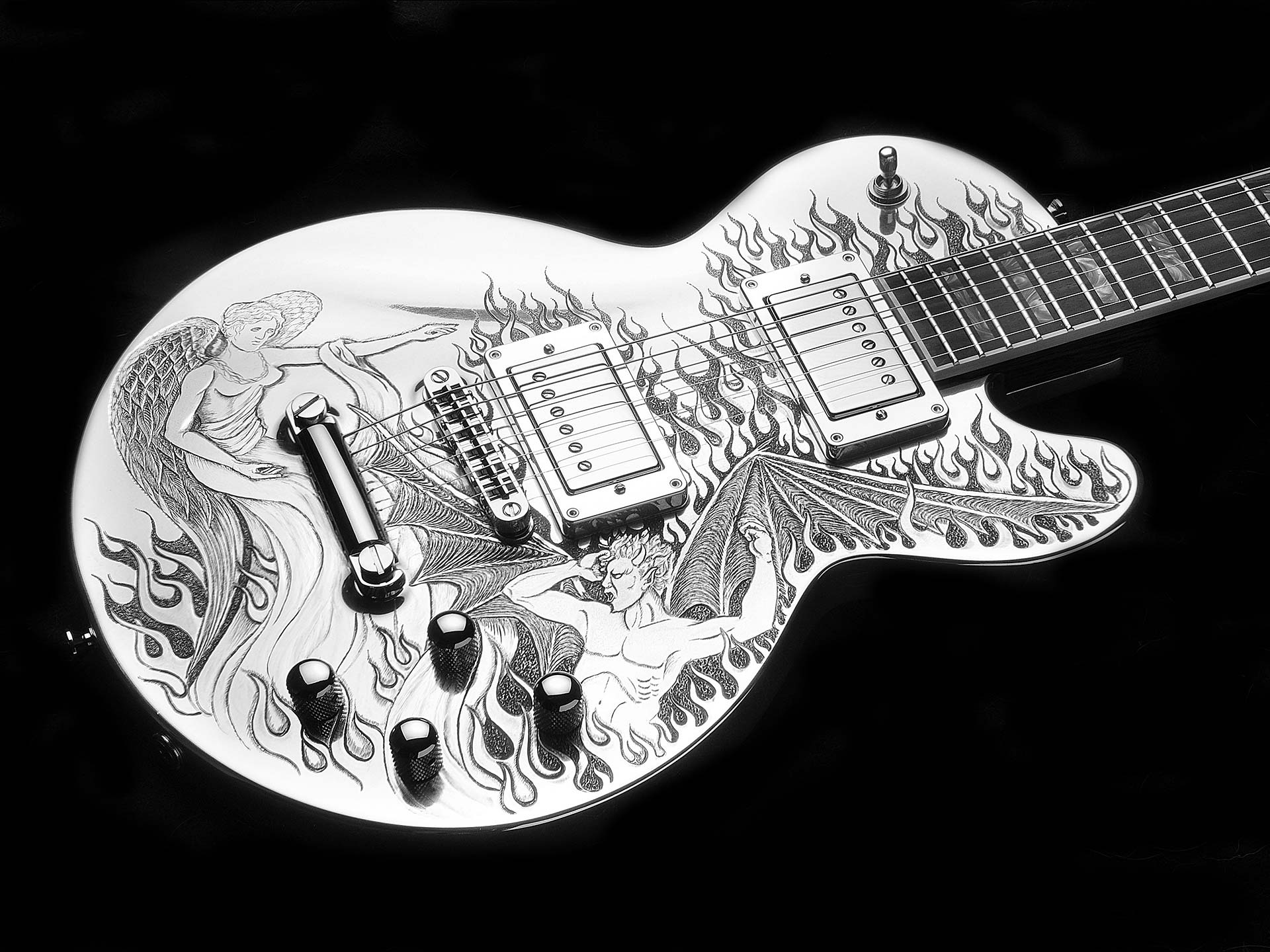


Amazing Talent 🔥
Impressive
Truly love her work ❤️
@sandi.cumming Thank you❤️
@heathernewengraving @nyc_motorcyclist ☆☆☆☆☆ Nuff Said! 🙏
WOW!!!! 😳
Sick
Wow!!! You did a great job of nailing who I am, as well as what I do! I am so very deeply thankful!!!!!!